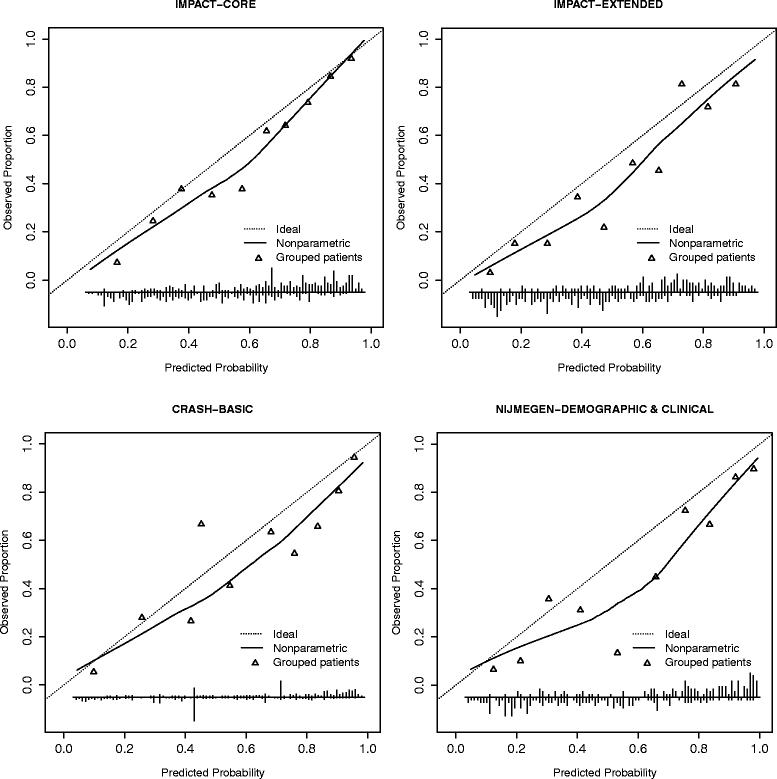Performance of IMPACT, CRASH and Nijmegen models in predicting six month outcome of patients with severe or moderate TBI: an external validation study
- PMID: 25406964
- PMCID: PMC4267426
- DOI: 10.1186/s13049-014-0068-9
Performance of IMPACT, CRASH and Nijmegen models in predicting six month outcome of patients with severe or moderate TBI: an external validation study
Abstract
Background: External validation on different TBI populations is important in order to assess the generalizability of prognostic models to different settings. We aimed to externally validate recently developed models for prediction of six month unfavourable outcome and six month mortality.
Methods: The International Neurotrauma Research Organization - Prehospital dataset (INRO-PH) was collected within an observational study between 2009-2012 in Austria and includes 778 patients with TBI of GCS < = 12. Three sets of prognostic models were externally validated: the IMPACT core and extended models, CRASH basic models and the Nijmegen models developed by Jacobs et al - all for prediction of six month unfavourable outcome and six month mortality. The external validity of the models was assessed by discrimination (Area Under the receiver operating characteristic Curve, AUC) and calibration (calibration statistics and plots).
Results: Median age in the validation cohort was 50 years and 44% had an admission GSC motor score of 1-3. Six-month mortality was 27%. Mortality could better be predicted (AUCs around 0.85) than unfavourable outcome (AUCs around 0.80). Calibration plots showed that the observed outcomes were systematically better than was predicted for all models considered. The best performance was noted for the original Nijmegen model, but refitting led to similar performance for the IMPACT Extended, CRASH Basic, and Nijmegen models.
Conclusions: In conclusion, all the prognostic models we validated in this study possess good discriminative ability for prediction of six month outcome in patients with moderate or severe TBI but outcomes were systemically better than predicted. After adjustment for this under prediction in locally adapted models, these may well be used for recent TBI patients.
Figures


References
-
- Mushkudiani NA, Hukkelhoven CW, Hernandez AV, Murray GD, Choi SC, Maas AI, Steyerberg EW. A systematic review finds methodological improvements necessary for prognostic models in determining traumatic brain injury outcomes. J Clin Epidemiol. 2008;61:331–343. doi: 10.1016/j.jclinepi.2007.06.011. - DOI - PubMed
-
- Steyerberg EW. Clinical Prediction Models: A Practical Approach to Development, Validation, and Updating. New York: Springer; 2009.
Publication types
MeSH terms
LinkOut - more resources
Full Text Sources
Other Literature Sources
Research Materials

